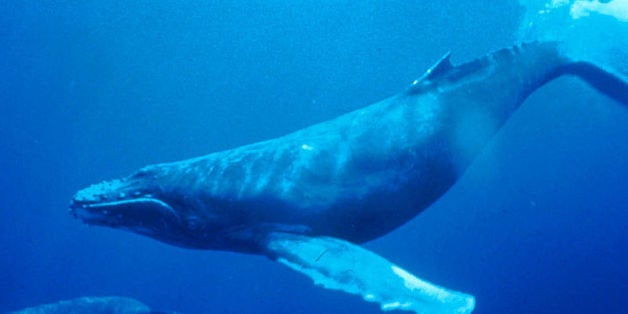
For the past few years, the U.S. Navy has been developing plans to expand its warfare training exercises in the Gulf of Alaska, which they admit will impact thousands of marine mammals. The exercises are planned each summer (Apr - Oct) for five years, over an area about 300 miles x 156 miles (42,146 square miles) of the northern Gulf of Alaska, just south of Prince William Sound, and east of the Kenai Peninsula and Kodiak Island.
The war games would include two Carrier Strike Groups, use of high-frequency and mid-frequency active sonar for Anti-Submarine Warfare exercises, training on new weapons systems, and two ship-sinking exercises each year. The live weapons used would include surface-to-air missiles, air-to-air missiles, air-to-surface missiles, surface-to-air deck guns, air-to-surface bombs, air-to-surface guns, surface-to-surface guns, and heavyweight torpedoes.
The extremely loud underwater noise from active sonar and ship sinking explosions will propagate for hundreds of miles through the offshore ecosystem, and have "the potential to disturb, injure, or kill marine mammals." The area proposed for these war games - the northern Gulf of Alaska - is one of the most productive regions anywhere in the world ocean. Marine mammals in the area include Blue, Fin, Sei, Minke, Sperm, Killer, Right, Gray, and Humpback whales, three species of beaked whales, Pacific white-sided dolphins, harbor porpoise, Dall's porpoise, sea lions, fur seals, elephant seals, harbor seals, ribbon seals, and sea otters. Active sonar exercises have been implicated in mass strandings of certain whale species elsewhere.
The Marine Mammal Protection Act establishes two levels of impacts, or "takes," of marine mammals: "Level A" - actions that may injure (or kill) a marine mammal or marine mammal population; and "Level B" - actions that may disturb a marine mammal or marine mammal population, causing disruption of critical behaviors such as migration, surfacing, nursing, breeding, feeding, or sheltering, "to a point where such behavioral patterns are abandoned or significantly altered."
Despite the Navy's proposed mitigation plan, including marine mammal lookouts and clearance zones, the Supplemental Environmental Impact Statement (SEIS) released last month predicts thousands of such marine mammal takes to result from the proposed exercises. The SEIS predicts that each year, active sonar use will result in 36,453 Level B takes of marine mammals, and 3 Level A takes. And explosives (missiles, bombs, heavy deck guns, torpedoes, ship-sinking, etc.) are predicted to result each year in 112 Level B takes, and 3 Level A takes of Dall's porpoises.
Thus, the Navy predicts that the five-year Gulf of Alaska training exercise will result in over 182,000 impacts ("takes") to marine mammals, causing behavioral impacts and some permanent injuries. While this is less than the original prediction of over 425,000 takes, this is still an astonishing, unnecessary, and unacceptable number of marine mammal impacts. And regardless of the Navy's predictions, these activities could still severely injure or kill marine mammals.
Given this expected and potential impact, the Navy should simply adopt its "No-Action" alternative, cancel the expanded training, and continue training as usual. If the Navy really needs to conduct these real-fire, active sonar exercises, it should relocate them far offshore in the central Pacific, thereby minimizing potential exposure to marine mammals and Alaska's coastal ecosystem.
But despite many such public comments submitted to the original 2011 EIS, the Navy is sticking with its "preferred" plan. It's pretty clear the Navy intends to conduct these damaging war-games in the Gulf of Alaska, regardless of public concerns.
So, if the Navy remains insistent on conducting these exercises in Alaska, at a minimum, its plan should be amended as follows:
1. Restrict the training area only to areas far offshore, (away from the continental shelf and slope, where most marine mammals are found), east of 143 W. Longitude, and at least 100 miles from the nearest seamount;
2. Change the timing of operations from summer (Apr - Oct) to winter (Nov - Mar), in order to minimize effects on migratory whales in the area in summer;
3. Accommodate independent scientific observers during the exercises to confirm effectiveness of the mitigation plan (Note: the Navy objects to independent observers, asserting they are "not necessary," and would present "security" concerns); and
4. Cancel the ship sinking (SINKEX) exercises altogether. The U.S. Navy already knows how to sink ships.
The public comment period is open until Oct. 20, 2014, and the public can comment on-line.
While it is important for the Navy to maintain readiness, its proposed war-games in the Gulf of Alaska would be in the wrong place, at the wrong time, and would cause too many impacts to marine mammals. If the Navy has to do such training, it should do it elsewhere.
To sign a petition for this cause, go here.
